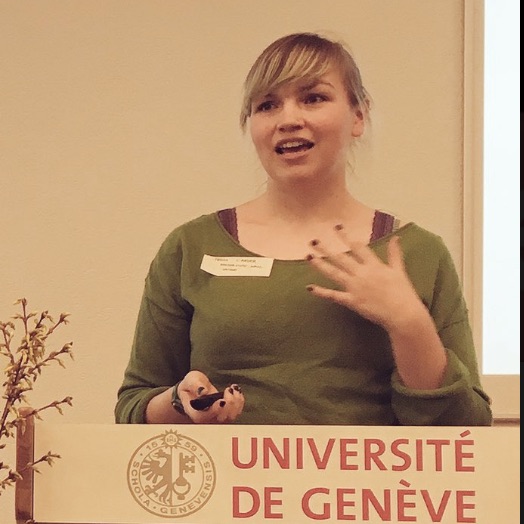 In this video from PASC18, Tessa Carver from the University of Geneva presents: Neutrino Telescope Data Management and Analysis.
In this video from PASC18, Tessa Carver from the University of Geneva presents: Neutrino Telescope Data Management and Analysis.
“We will describe the data flow structure of onsite DAQ to filtered steams for various physics scopes of IceCube and ANTARES and the plans for KM3NeT. The Data formats and data management software will also be described as well as plans for making data public.”
The IceCube Neutrino Observatory is the first detector of its kind, designed to observe the cosmos from deep within the South Pole ice. An international group of scientists responsible for the scientific research makes up the IceCube Collaboration. Encompassing a cubic kilometer of ice, IceCube searches for nearly massless subatomic particles called neutrinos. These high-energy astronomical messengers provide information to probe the most violent astrophysical sources: events like exploding stars, gamma-ray bursts, and cataclysmic phenomena involving black holes and neutron stars.
The Antarctic neutrino observatory, which also includes the surface array IceTop and the dense infill array DeepCore, was designed as a multipurpose experiment. IceCube collaborators address several big questions in physics, like the nature of dark matter and the properties of the neutrino itself. IceCube also observes cosmic rays that interact with the Earth’s atmosphere, which have revealed fascinating structures that are not presently understood.
Most neutrinos observed by IceCube are created in the Earth’s atmosphere through the interactions of cosmic rays,” says Tessa Carver in an article by Sciences Switzerland. “However, our Geneva research group is interested in those neutrinos that come to us from the far universe and therefore can tell us a lot about the construction and history of the cosmos. Cosmic neutrinos should have higher rates at higher energy compared to atmoshperic neutrinos. Therefore by selecting high energy events we can try and have an event selection with a higher fraction of cosmic events.” Since 2010, IceCube has detected 80 very high energy neutrinos having a high probability of coming from a cosmic source. They have in common a very high energy (30 to 2600 TeV) – that’s a multiple of the energy that elementary particles reach in CERN’s LHC particle accelerator.
Approximately 300 physicists from 49 institutions in 12 countries make up the IceCube Collaboration. The international team is responsible for the scientific program, and many of the collaborators contributed to the design and construction of the detector. Exciting new research conducted by the collaboration is opening a new window for exploring our universe.
We want to find out where exactly these neutrinos come from,” says Tessa Carver. To determine the origin, the scientists use the information provided by the IceCube experiment. Since every neutrino arriving from the cosmos is detected by several ice cube modules, their direction can be estimated. If you follow the trajectory backwards, you know the direction from which the neutrino comes. “We choose to investigate positions in the sky where other experiments have already observed sources we deem interesting. We then determine whether we have a significant number of neutrino events coming from these directions,” explains Carver.




